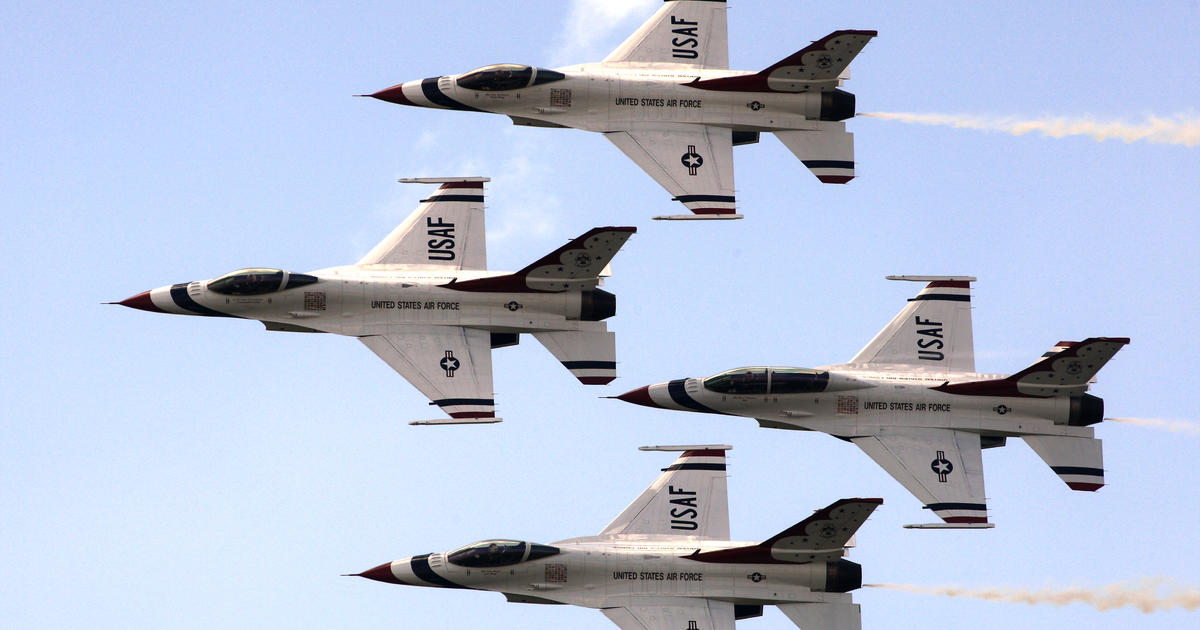NOAA Increases Storm Count, Says We're In For "Extremely Active" Hurricane Season
MIAMI (CBSMiami/AP) - With nine named storms down, and the peak of hurricane season still ahead of us, the National Oceanic and Atmospheric Administration (NOAA) has updated its forecast for this year.
On Thursday, they predicted that we would have an "extremely active season" with 19 to 25 named storms (winds of 39 mph or higher), 7 to 11 hurricanes (winds of 74 mph or higher), of which 3 to 6 would be major hurricanes, meaning Category 3 and above.
In May, when they released their original prediction, their outlook called for 13 to 19 named storms, 6 to 10 hurricanes, and 3 to 6 major hurricanes.
The agency increased the chance of an above average hurricane season from 60% to 85%.
"It looks like this season could be one of the more active in the historical record," but it's unlikely to beat 2005's 28 named storms because the oceans were warmer and other conditions were more conducive to storm formation 15 years ago, said NOAA lead forecaster Gerry Bell.
This year's forecast of up to 25 is the highest number NOAA has ever predicted, beating the 21 predicted for 2005, Bell said.
On Wednesday, researchers at Colorado State University updated their forecast for this year and they too predicted and "extremely active season" with 24 named storms, 12 hurricanes, 5 of which will become major hurricanes.
Last April, their initial forecast called for 16 named storms, 8 hurricanes, and 4 major hurricanes.
In an average season, we see 12 named storms, 6 hurricanes, and 3 major hurricanes.
So far this year, we have had 9 named storms of which 3 became hurricanes. There have been no major hurricanes at this point.
The reason for the increase, according to researchers, is due to sea surface temperatures across the tropical Atlantic are much warmer than normal, and vertical wind shear is well below average.
"We anticipate an above-normal probability for major hurricanes making landfall along the continental United States coastline and in the Caribbean. As is the case with all hurricane seasons, coastal residents are reminded that it only takes one hurricane making landfall to make it an active season for them," according to a statement from Philip J. Klotzbach, Michael M. Bell, and Jhordanne Jones at Colorado State University.
"Everything looks ready to be a pretty huge year," said University of Miami hurricane researcher Brian McNoldy, who said it's likely that there will be more storms than names.
There are 21 names assigned to a hurricane season. If there are more than 21 storms, meteorologists turn after Wilfred to the Greek alphabet — Alpha, Beta, Gamma and so on.
The number of storms doesn't matter as much as where they go, MIT meteorology professor Kerry Emanuel said, noting the busy 2010 hurricane season that barely touched the United States.
Klotzbach's forecast says more storms increases the chance of another U.S. landfall. It says there's a 74% chance that yet another storm will hit the U.S. coastline somewhere, with a 49% chance of a hit on the East Coast and Florida peninsula and a 48% chance of a hit on the Gulf Coast.
Most of this year's storms so far have been weak, decapitated by high level winds and dry air, but Klotzbach said that's about to change.
Sea surface temperatures in the eastern Atlantic are nearly 2 degrees warmer than normal. That not only provides more fuel for storms but changes air pressure and winds to make favorable conditions for storms to form and strengthen, he said.
Emanuel of MIT pointed to an extra quiet Pacific storm season as another indicator for an active Atlantic. When the Pacific is quiet, the Atlantic tends to be much busier as they tend to balance out.
Also, water temperatures near the equator in the Pacific are cooling, with a brewing La Nina, which is the flip side of El Nino. Research shows there are usually more Atlantic storms during a La Nina.
Even though studies predict that a warmer world means generally stronger and wetter hurricanes, NOAA's Bell and Emanuel said there are so many complicated factors in an individual season they can't say either way whether man-made climate change is a factor in active years like 2020.
Bell said the biggest climatic factor "that dominates the hurricane trend" is a 25-to-40-year natural cycle of busy and weak hurricanes connected to large-scale Atlantic ocean and air patterns. The current active cycle started in 1995 "and we don't know how long it's going to last," Bell said.
(© Copyright 2020 CBS Broadcasting Inc. All Rights Reserved. The Associated Press contributed to this report.)



